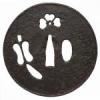-
Posts
1,271 -
Joined
-
Last visited
-
Days Won
1

hxv replied to SwordGuyJoe's topic in General Nihonto Related Discussion

hxv replied to hxv's topic in General Nihonto Related Discussion

hxv replied to hxv's topic in General Nihonto Related Discussion

hxv replied to hxv's topic in General Nihonto Related Discussion

hxv replied to hxv's topic in General Nihonto Related Discussion

hxv replied to Pteradon's topic in Military Swords of Japan

hxv replied to c2tcardin's topic in For Sale or Trade

hxv replied to flemming7x64's topic in Military Swords of Japan

